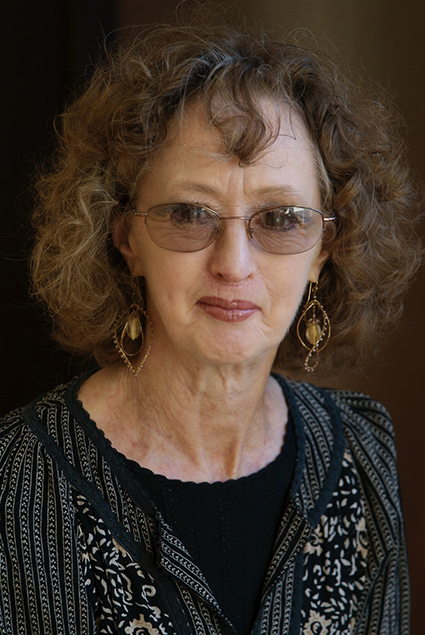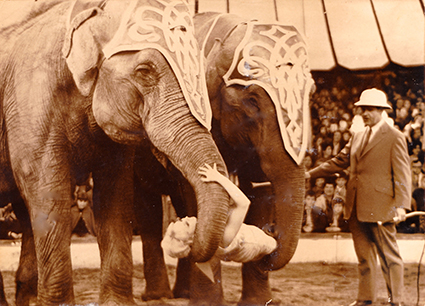Obituary: Maggi Phillips (1944-2015)

Maggi Phillips, 2009
photo courtesy Anna Phillips
Maggi Phillips, 2009
Maggi Phillips reviewed perceptively, lyrically and idiosyncratically for RealTime for the best part of a decade. She was ever attentive, not easily impressed but fair and never likely to condemn—save in her final review in which she grumpily dismissed Perth Festival works by William Forsythe and Mark Morris while rhapsodising over Aakash Odedra’s Rising. There was a special place in her heart for Indian dance. As editors we’d sometimes return reviews with ‘please explain’ annotations attached to her more poetic responses, which she graciously answered. Occasionally we’d receive a review with a note that said, “This one might be a bit much.” Barely a week before her death we were in touch about reviewing a new show by a young WA choreographer. Maggi and her writing are greatly missed.
Keith and Virginia
We all need a rhinoceros
Famously, somewhere in Perth, there was a photograph of Maggi dancing on top of an elephant. I was never lucky enough to see it myself, but it had taken on the status of legend within West Australia and beyond. It was certainly one of Maggi’s best stories, but it was far from her only one. A significant part of her charm was the way she wove in these tales of her extraordinary career into discussions which, at first glance, might seem to have had little to do with them.
Once when presenting to young honours and postgraduate researchers at the Western Australian Academy for the Performing Arts [WAAPA], Maggi related how she had toured with a company which had a rhinoceros. Whenever she was feeling stressed or wanted a calming break in her routine, she would go to its cage and watch it. She said she found the way it wiggled its ears soothing. We all needed a rhinoceros, she told us her tall, balletic frame curving sympathetically with her deep, throaty laugh.
When I came to WAAPA as a Research Fellow at the close of 2003, Maggi immediately took me under her wing. It was a key moment in my career, being the point at which I flew the world of thesis writing and moved to working at a major tertiary institution. I cannot even begin to count the number of other nervous young scholars and artists she mentored over the course of her life, but all of us felt very loved and protected by Maggi.
Maggi and I often disagreed—but upon the best of all possible terms, of course. Her long, rising exclamation of “owwww!” and the sweep of her arm as she moved her body back away from me in mock anger was a common response. She put on a fine comic show of being shocked at how I referred to Josephine Baker as “Josie,” before she floored me with another of her amazing tales, this time of how a mature Josephine Baker had come across Maggi and her fellow dancers after they had been abandoned by their company manager in South America, when the accounts had gone belly-up. The divine Ms Josephine put on a special benefit show to secure funds to send these poor waifs back home. My own arguments with Maggi—and our many agreements as well—were always based on a shared love of performance in all its forms. I sometimes imagined Maggi as a Josephine figure herself, wrapped in a svelte black knit dress as when she told the story of the rhinoceros. She had both style and charm, and she knew it, but she was always gracious, friendly and loving.
Typically, however, she was modest. She felt she served the arts and students, and did not go out of her way to promote herself, despite the fact that this is what most of us in academia are encouraged to do. She was like her apartment: beautiful but unassuming. I still remember the jars of cuttings growing along the windowsill, a fecund garden sprouting in all directions with the simplest of supports. Back on campus, Maggi agreed with me that the raucous cockatoos which squawked and screeched from the pines outside our offices were, like the rhinoceros, creatures to treasure and revel in—although she did concede she found the way they dropped chewed pine cone fragments on top of her car frustrating. Putting up with a messy vehicle or working on the side-lines was fine with Maggi, so long as there was dance and music in the world.
Maggi’s charisma derived from the manner in which her many life stories and life experiences fed into her day to day life and demeanour. She could move from serious discussion of the latest work by the WA Ballet to relating how as a young dancer, she had stayed at a questionable apartment off a side street in Paris, and how the local prostitutes used to shoo their clients and force them to stand in line, every time Maggi and her colleagues came back from performing in the evening.
Maggi’s degree in world literature and comparative analysis, which she completed after retiring from dancing herself, continued to inform her work throughout her career. She remained sensitive to cultural difference and to the context within which dance and the arts function at all times. She was a tireless advocate of the special forms of knowledge which dance, choreography and the arts offer to society.
One of Maggi’s greatest assets was her openness. Merce Cunningham and Romantic ballet, ballroom dancing and Bharata-Natyam, Maggi loved it all, and while I would often bemoan to her the aesthetics of one piece or another in favour of some purportedly more avant-garde ideal, Maggi was keen to embrace all comers. Although she had a particular fondness for art of the Indian subcontinent, Maggi’s tastes were nothing if not catholic in the truest sense. And we dearly loved her for it. I owe her much, and my thoughts and best wishes go out to all those others who were lucky enough to share time with the woman who taught me that we all need a rhinoceros.
Jonathan Marshall, University of Otago, Dunedin, NZ (WAAPA 2004-08)

Maggi Phillips, 1969, KNIE Circus Switzerland
photo courtesy Anna Phillips
Maggi Phillips, 1969, KNIE Circus Switzerland
Maggi Phillips
Maggi Phillips was Associate Professor and the Coordinator of Research and Creative Practice at the Western Australian Academy of Performing Arts and led the Australian Learning and Teaching Council project, Dancing between Diversity and Consistency: Refining Assessment in Post Graduate Degrees. In 2010, she received an Australian Dance Award for her Services to Dance Education and in 2013 took on the role of Editor of Brolga—an Australian journal about dance.
Maggi Phillips’ own account of her remarkable pre-WAAPA career can be read on the Tracks’ website www.tracksdance.com.au/maggi-phillips-1944—ballet from the age of six; training at the National Theatre Ballet School; no ballet jobs, so a black and white minstrel show in 1964 (her first professional employment); from 1965 “eight years under Dois Haug (choreographer Moulin Rouge)…with one of her touring troupes [travelling] Europe, Middle East, and South America, in cabaret, theatres, casinos, and circuses;” in Darwin in 1974 as a young mother; 1976 onwards in Darwin variously teaching, choreographing, setting up an amateur dance company, Dance Mob, working with Brown’s Mart on education projects and then as Dance Officer bringing in guest choreographers for major productions, touring extensively to Indigenous communities and establishing the professional dance education company Feats Unlimited, a Brown’s Mart initiative, before relocating to work at WAAPA. Tracks pays tribute to Maggi “as an inspiration and pioneer in bringing modern dance to Darwin,” listing the many people still active in the arts in Darwin who benefitted from her legacy, including current Tracks artistic directors Tim Newth and David McMicken.
RealTime issue #127 June-July 2015 pg. 37






